Welding was considered a highly paid and skill-based trade, but the trends slowly changed as technological advancements made welding machines affordable and more popular among hobbyists and welding enthusiasts.
With the ever-growing welding market, many of you wonder how to choose a welder?
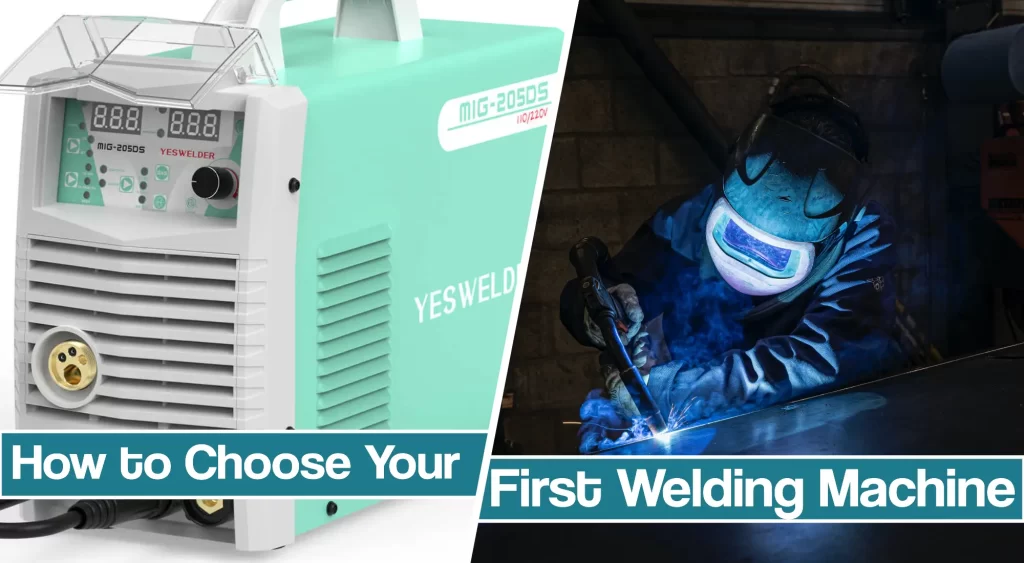
Since there are way too many machines out there, we bring you a detailed and comprehensive guide that will help you buy your first welder. Let’s look at the most crucial factors you should consider.
Types of Welders Based on Welding Processes
Today, the most common welding processes are MIG welding, flux core welding, TIG welding, and Stick welding. Knowing that, you can deduce that each welder can be dedicated to most commonly one or two processes (for example, MIG/Flux-cored welding or TIG/Stick welding), but there are also multi-process machines.
Multi-process welders commonly combine all four welding processes, but they are usually a more expensive choice. In addition, manufacturers even managed to combine welding and cutting into an all-in-one machine, such as YesWelder MP200.
Understanding the fundamentals of each process will significantly help you choose your welder, so let’s take a brief overview.
MIG Welding and MIG welders
MIG welding basic makes it one of the most straightforward processes to master, making it a popular choice among beginners and hobbyists. Fundamentally, the gas metal arc welding process utilizes a wire welding electrode which is fed automatically at a constant pre-selected speed.
The arc is created by an electrical current between the base metal and the wire. The heat of an arc melts the wire and joins it with the base, producing a high-strength weld.
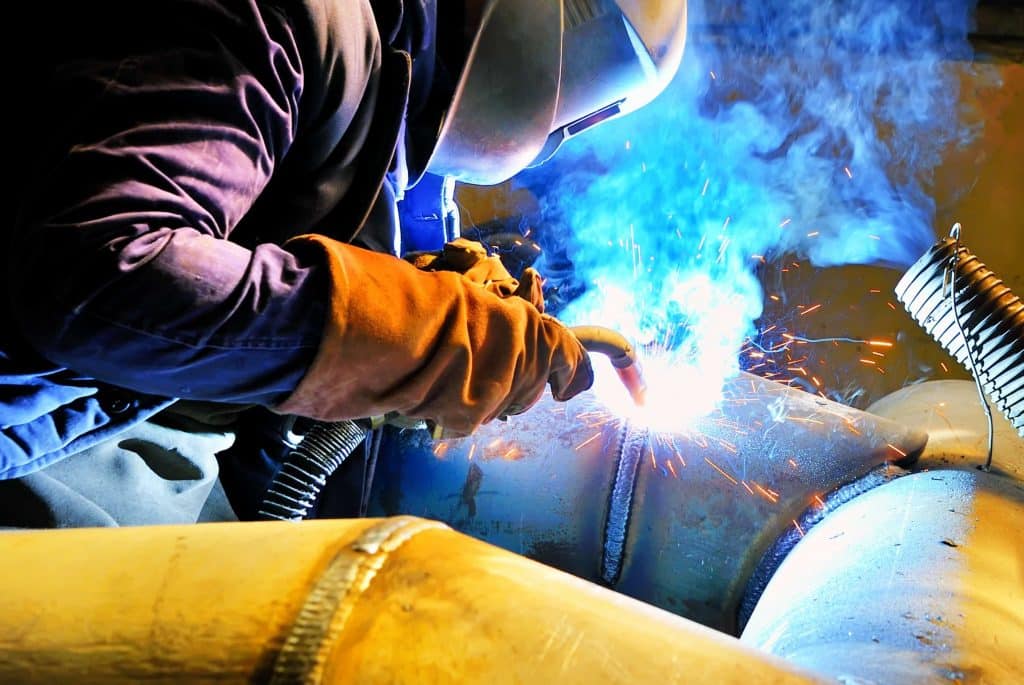
Since the main difference between Metal inert gas and flux-cored welding is in the wire, MIG welder can be commonly used as a flux core welder. As the flux-cored arc welding uses flux-core welding wire, it can be used for welding outdoors.
The most significant advantage of MIG welding is that you can use it to weld aluminum, steel, and stainless steel with little to no effort. We listed the best MIG welders in this detailed article.
TIG Welding and TIG welders
Gas tungsten arc welding, also known as TIG welding, is one of the most challenging welding processes to master, resulting in highly aesthetic weld beads.
In this process, a non-consumable tungsten electrode of the welding torch produces the weld.
The weld area is protected by a shielding gas (usually pure argon gas), and most often the filler metal is added by hand.
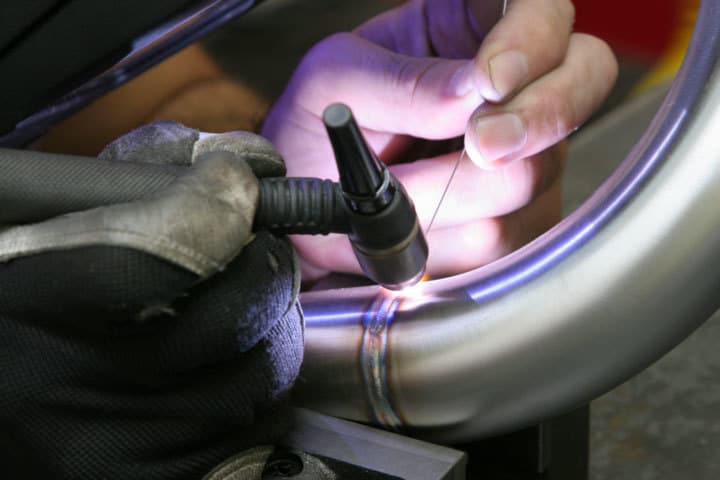
TIG welders produce the cleanest weld, making them suitable for aluminum, stainless steel, steel, and exotic materials such as titanium, magnesium, and copper alloys. In addition, TIG machines are significantly advanced pieces of welding equipment, as they let you control your weld using pulse, balance, 2T/4T mode, and other settings.
Keep in mind that most TIG welding machines are capable of Stick welding, but most commonly, you don’t get the equipment to do it.
If you are looking for the best TIG welder for the money, check out our detailed article.
Stick welding and Stick Welders
Shielded metal arc welding is an economical and straightforward process, making it a popular choice for home-shop and outdoor welding. In a nutshell, an electric current flows from a gap between the metal and the welding electrode, producing a welding arc.
Stick welding machines are capable of welding various metals, but they are not suitable for materials like thin metals. In addition, a Stick welder can utilize AC, DC, or AC/DC power supply, with AC being the most economical.
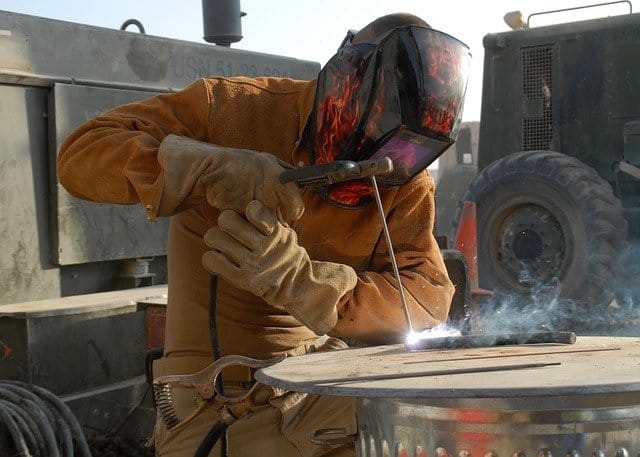
Even though stick welders produce somewhat more spatter and might be a bit more to use, they are suitable for dirty or rusty material, and once you need to cut the costs. Keep in mind that Stick welders are compact and lightweight, as you can even carry some models on your shoulder.
Buying a Stick welder can be easy if you follow our guide.
Crucial Factors That Can Affect Your Welder Choice
Now that you know the basic types of welding machines, let’s overview the factors you need to consider before choosing. The final list would be enormous since various factors could affect your choice. That’s why we will try to cover only the most crucial ones.
By crucial factors, we mean metal choice, amperage, power supply, duty cycle, welding conditions, and gas choices. Since it is scarce to see a single welding process covering all of your welding job needs, you will need to choose carefully.
How To Choose A Welder According To The Metal you Are Welding
As a novice welder, you are most likely to take mild steel or carbon steel, as it is one of the most weldable and forgiving materials to weld. However, soon enough, you will have to deal with more complex metals such as stainless steel or non-ferrous metals such as aluminum and aluminum alloys, copper, or titanium.
Therefore, take the time upfront to identify the metals that will occupy the most considerable percentage of your welding activity.
Carbon Steel Welding
Carbon steel is one of the most weldable metals. Since it can handle a higher heat input, mild steel is forgiving and almost all welding processes can weld it.
Therefore, if your everyday welding projects mainly include tackling carbon steel, you can choose either your first MIG welder for high welding speeds and ease of use, a Stick welder for economics, or a TIG welder for weld appearance.
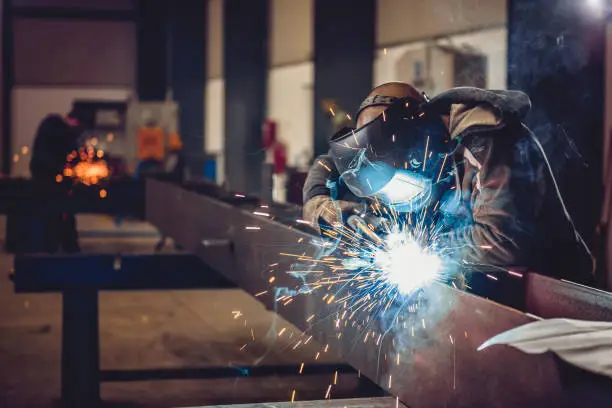
Aluminum Welding
Aluminum welding can be significantly challenging as the metal conducts heat more efficiently than other welding material. Therefore, any mistakes can lead to burn-through, distortion, and defects.
Since TIG welding machines offer perfect control over the heat, they are a logical choice for aluminum welding. However, keep in mind that welding aluminum also requires cleanliness. Therefore, your TIG welder should be able to work out of the AC power supply and use a pure argon shielding gas.
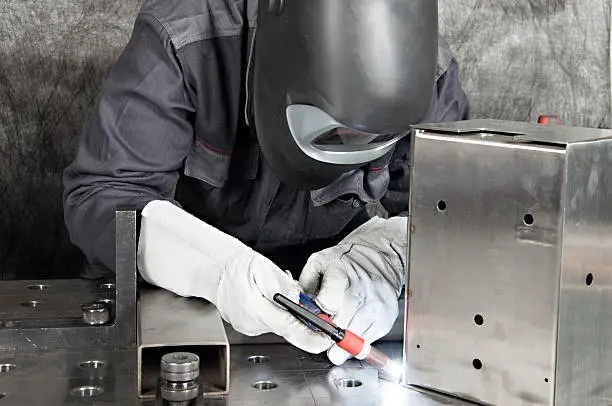
MIG welder is also capable of aluminum welding successfully, but there are several precautions. MIG welding basics include continuous wire feed which is often too slow for aluminum wire. Therefore, you should opt for a MIG weld with a spool gun for higher productivity when dealing with aluminum.
Even though stick aluminum welding is possible, it is not so widely preferred due to the characteristics of both the process and metal. For example, aluminum most often comes in sheets while Stick welding is not suitable for thinner metals. Therefore, you might need to choose different welding processes to do it.
Stainless Steel Welding
Basically, stainless steel is regular steel with added alloyed metals containing at least 10.5% chromium, less than 1.2% carbon, and other alloying elements. These alloying elements improve the properties and make it resistant to corrosion.
However, they make it significantly harder to weld, since too much heat or impurities can interfere with its advantages. If your welding jobs commonly include welding stainless steel, you can opt for a TIG or a MIG welder.
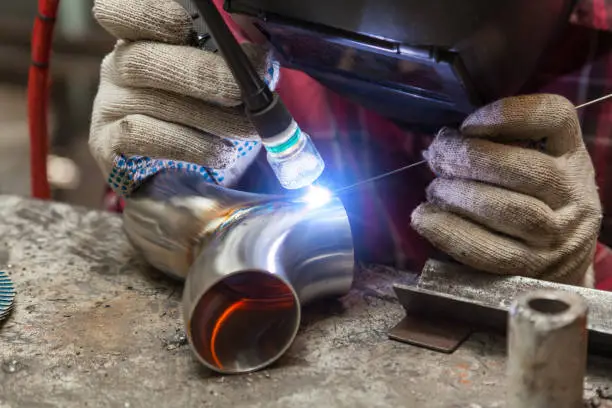
TIG welders are generally preferred since they offer fine control over the welding heat, and you can achieve outstanding-looking welds. MIG welder brings increased productivity, but you should make sure you limit the heat, match the filler metals, and make sure you clean the surface with stainless steel tools.
While there is a wide variety of metals you can get in touch with, these three are the most common. If you are looking the guides on how to weld ferrous metals such as cast iron and other non-ferrous metals, you can always check our detailed guides.
Selecting the Welding Amperage According To Your needs
After determining the type of the welder according to the metal you are most likely to weld, you will need to consider the thickness. To make sure your welder can weld thick metals with ease, you will need to match the amperage according to the thickness.
You will need roughly 1 amp of power for every .001 inch of steel thickness as a rule of thumb. However, remember that stainless steel requires 10 to 15% less heat input, while aluminum requires about 25% more.
Even though capability differs, this table can serve as a general guide to the steel thickness that can be welded in a single pass:
- A 140-amp rated machine: up to about 1/4 inch
- A 180-amp rated machine: between 5/16 inch and 3/8 inch
- A 200-amp rated machine: between 3/8 inch and 7/16 inch
- A 250-amp rated machine: 1/2 inch
A Miller Electric provides a simple table that represents the most common material thickness used in different welding projects you might come across.
| Application | Common Material Thickness |
| Auto body | 3/16 inch or less |
| Trailer frames and fencing | 1/4 inch to 5/16 inch |
| Farm, ranch, and landscape | 5/16 inch to 3/8 inch |
| Thick structural components | Over 3/8 inch |
| Bicycles, lawnmowers, or tube frames | 1/16 inch |
| Boats, cars, and motorcycles | 1/16 inch to 1/8 inch |
| Hunting stands and utility trailers | 1/16 inch to 1/8 inch |
| General to heavy repair | 3/16 inch to 1/4 inch |
Using these tables can quickly help you choose an amperage according to your welding projects and material thickness and eventually the right welder.
Welding Power Source
All arc welders can utilize 110/120V, 220/240V, dual voltage input (110/220V), DC or AC/DC current, or single or three phases. So what does that mean for you?
The most significant advantage of 110/120V welders is that you can plug them into your standard household outlet. You won’t need any unique tweaks and arrangements since they usually require up to a 20-amp breaker you commonly have installed in your home. However, they are typically rated up to 140 amps, meaning you should expect too much power.
On the other hand, 220/240V welders are capable of outputting a significant amount of power, but the outlet is standard in industrial locations. To install it into your home, you will need to wire a circuit from the control panel and a dedicated 30 amp breaker.
Arc welding machines utilize AC, DC, or AC/DC current. Most MIG welders and Stick welders use DC current as it is suitable for welding various metals. Meanwhile, TIG welders use DC for steel but AC current for exotic metals such as titanium, copper, or aluminum for best welding quality.
Most electrical equipment is designed for standard single-phase operation, and you are most likely to find single-phase welders for hobby and everyday use. However, warehouses and other industrial locations offer a three-phase option, but these are industrial-grade machines.
Duty Cycle in Welder
The duty cycle represents the period within a 10-minute window, you can weld without welder overheating. For example, a 30% duty cycle means you can weld 3 minutes straight before making a 7-minute break.
In addition to the duty cycle, manufacturers state the maximum amperage. For example, the most efficient welders offer a 60% duty cycle rated at full output. But keep in mind that as the duty cycle rises, the amperage lowers. However, specific stick welding machines can even offer a 100% duty cycle at maximum output, meaning you won’t even have to take a break.
So, when choosing a welder, you will need to adjust the machine’s duty cycle to your needs. This short information might help you suit the duty cycle to different needs:
- Light industrial/hobbyist use: 20% duty cycle
- Medium-duty use: 40-60% duty cycle
- Heavy-duty use: 60-80% duty cycle
Welding Conditions
Finally, you will have to ask yourself what conditions you are welding in. MIG and TIG welding processes utilize shielding gas which protects the weld puddle. You can use inert gases such as argon or helium, or semi-inert and active gases such as CO2 or oxygen. The choice varies on the given material, but you need to consider the wind.
Wind can easily blow away the shielding gas, exposing the puddle to the atmosphere conditions, causing defects and impurities. That’s why the MIG process and TIG are best used indoors.
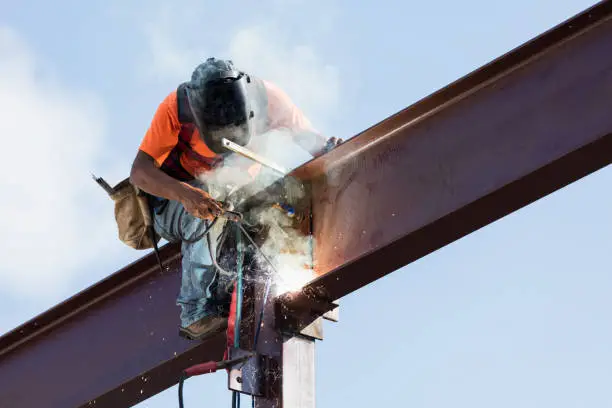
Meanwhile, Flux-cored welding uses a flux-cored wire where a layer of flux protects the weld as it solidifies. In addition, stick welding electrodes work fundamentally the same, so these two processes are better for outdoor conditions. In addition, a protective flux-coated electrode can produce more toxic fume, so it is even recommended to work outside.
Resources:
- https://www.millerwelds.com/resources/article-library/buying-your-first-welder-a-practical-informative-guide-for-doityourselfers
- https://www.hobartwelders.com/projects-and-advice/articles/questions-to-ask-when-buying-your-first-welder
- https://thepowersite.co.uk/blog/choosing-a-welder-a-basic-guide/
- https://training.esabna.com/mod/page/view.php?id=984
- https://www.unitedrentals.com/project-uptime/equipment/what-welder-do-i-need




